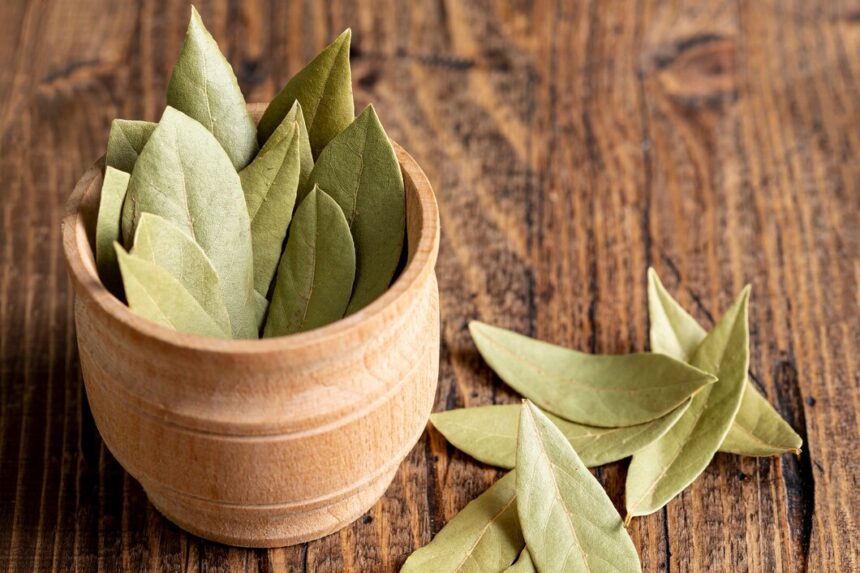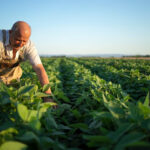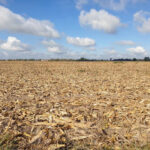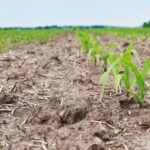Bay leaves, known for their aromatic qualities, are a popular addition to many South African kitchens. As a farmer, growing bay leaves (Laurus nobilis) can be a rewarding and lucrative venture. This guide takes you through the process of growing bay leaves, from seed to harvest, and provides insights on land preparation, inputs required, potential pests and diseases, as well as best practices for care and maintenance.
1. Land Preparation and Soil Requirements
Bay trees thrive in well-drained, fertile soils with a pH level between 6.0 and 7.5. Before planting, it’s essential to prepare the land properly to ensure a successful harvest. The following steps will help set up the right environment for bay leaves:
- Soil Preparation: Start by clearing the land of weeds, debris, and rocks. Work the soil to a depth of about 30 cm to ensure good root penetration. If the soil is heavy clay, incorporate organic matter such as compost to improve drainage. For sandy soils, adding organic matter helps retain moisture and nutrients.
- Soil Fertility: Bay trees require soil rich in organic material. It’s advisable to conduct a soil test before planting to assess nutrient levels and pH. Based on the results, you may need to apply lime to raise the pH or sulfur to lower it.
- Fertilizer Application: Apply a balanced fertilizer (such as NPK 10:10:10) during land preparation to promote healthy root development. Organic fertilizers like compost or well-rotted manure can also be used to improve soil structure.
2. Planting Bay Leaves from Seed
Bay leaves can be grown from seeds, which typically take longer to germinate. Here’s what you need to do:
- Seed Selection: Purchase seeds from a reliable supplier to ensure they are fresh and viable. Bay leaf seeds have a low germination rate, so it’s essential to plant them promptly.
- Germination Process: Soak the seeds in warm water for 24 hours before planting to improve germination rates. Plant the seeds in seed trays filled with well-draining potting soil or a mix of sand and compost. Place the trays in a warm, shaded area with temperatures between 18°C and 21°C.
- Transplanting: After 6 to 8 weeks, when the seedlings have developed several leaves, they can be transplanted into the field. Space the plants about 2 meters apart to allow for their mature size. Bay trees can grow large, so it’s important to provide enough space for proper air circulation.
3. Growth Stages and Care
Bay trees require consistent care during their growth stages. The following factors must be monitored closely:
- Watering: Bay trees are drought-tolerant but require regular watering during their early growth stages. Water the plants deeply, ensuring that the soil is moist but not waterlogged. In established trees, watering once a week should suffice during the growing season. Avoid overwatering, as bay trees do not tolerate standing water.
- Temperature and Light: Bay trees prefer full sun but can tolerate partial shade. They grow best in temperate climates but can also withstand light frost. In South Africa, bay trees are suited to coastal regions or areas with mild winters.
- Pruning: Pruning is essential for shaping the tree and removing any dead or damaged wood. Light pruning should be done annually to maintain the tree’s form. If the tree grows too tall, you can prune it to encourage lateral growth.
- Weeding: Regularly remove weeds around the base of the trees to prevent competition for nutrients. Be careful not to damage the roots when weeding.
4. Fertilizer and Inputs
- Fertilizer: Once the bay tree has established, apply a slow-release fertilizer once a year to support growth. A balanced fertilizer with micronutrients is best. If you notice yellowing leaves or poor growth, it could indicate a nutrient deficiency, in which case additional nitrogen or iron may be needed.
- Machinery: During planting and land preparation, a tractor with a plow or disc harrow will be essential for soil cultivation. A tractor-mounted sprayer may be used for applying pesticides and fertilizers, ensuring even distribution across large areas.
5. Pests and Diseases to Watch Out For
While bay trees are relatively hardy, they can still be susceptible to a few pests and diseases:
- Pests:
- Bay Leaf Caterpillar (Cydalima perspectalis): This pest feeds on the leaves of bay trees, causing significant damage. Early detection is crucial. Hand-pick caterpillars or use a natural insecticide like neem oil.
- Aphids: Aphids may infest new growth, leading to curled leaves and the spread of mold. Use insecticidal soap or a neem oil solution to manage aphid populations.
- Diseases:
- Root Rot: Caused by waterlogging or poor drainage, root rot can quickly kill bay trees. Ensure proper watering practices and good drainage to avoid this problem.
- Powdery Mildew: This fungal disease can affect bay leaves, causing a white powdery coating on leaves. Apply a fungicide if the issue becomes severe.
6. Pesticides and Herbicides
- When to Use: Use pesticides only when necessary. If pest infestations are found, start by using natural remedies like neem oil or insecticidal soap. Chemical pesticides should only be used when organic methods fail, and they should be applied according to manufacturer instructions to avoid damage to the environment and non-target organisms.
- Herbicides: Avoid the use of herbicides near bay trees, as they can harm the trees and the surrounding soil. Hand weeding or mulching is a safer option for controlling weeds around bay trees.
7. Harvesting Bay Leaves
Bay leaves are typically ready for harvesting 3 to 4 years after planting, depending on growing conditions. Here’s how to harvest them:
- Timing: Bay leaves are best harvested when they are mature but still tender. Leaves can be harvested at any time of the year, but the flavor is most intense just before or during the flowering season.
- Method: Use sharp, clean scissors or pruning shears to cut leaves from the tree. Harvest only a few leaves from each branch to encourage new growth. Overharvesting can stress the tree and affect its long-term health.
8. Storage and Post-Harvest Care
Once harvested, bay leaves need to be stored properly to maintain their flavor and aroma:
- Drying: Dry the leaves by hanging them in small bunches in a cool, dry place with good air circulation. Alternatively, you can dry the leaves in a dehydrator or low-heat oven for faster results.
- Storage: Once dried, store bay leaves in airtight containers, such as glass jars or sealed plastic bags, in a cool, dark place. Proper storage will preserve the flavor for up to a year.
Growing bay leaves in South Africa offers a profitable agricultural opportunity. By following proper land preparation, fertilization, pest management, and harvest techniques, you can ensure a high-quality product. Bay trees require patience and careful attention, but with the right care, they can provide a steady supply of aromatic leaves for culinary use and export. With the right inputs and practices, you can enjoy a successful bay leaf farming venture.







